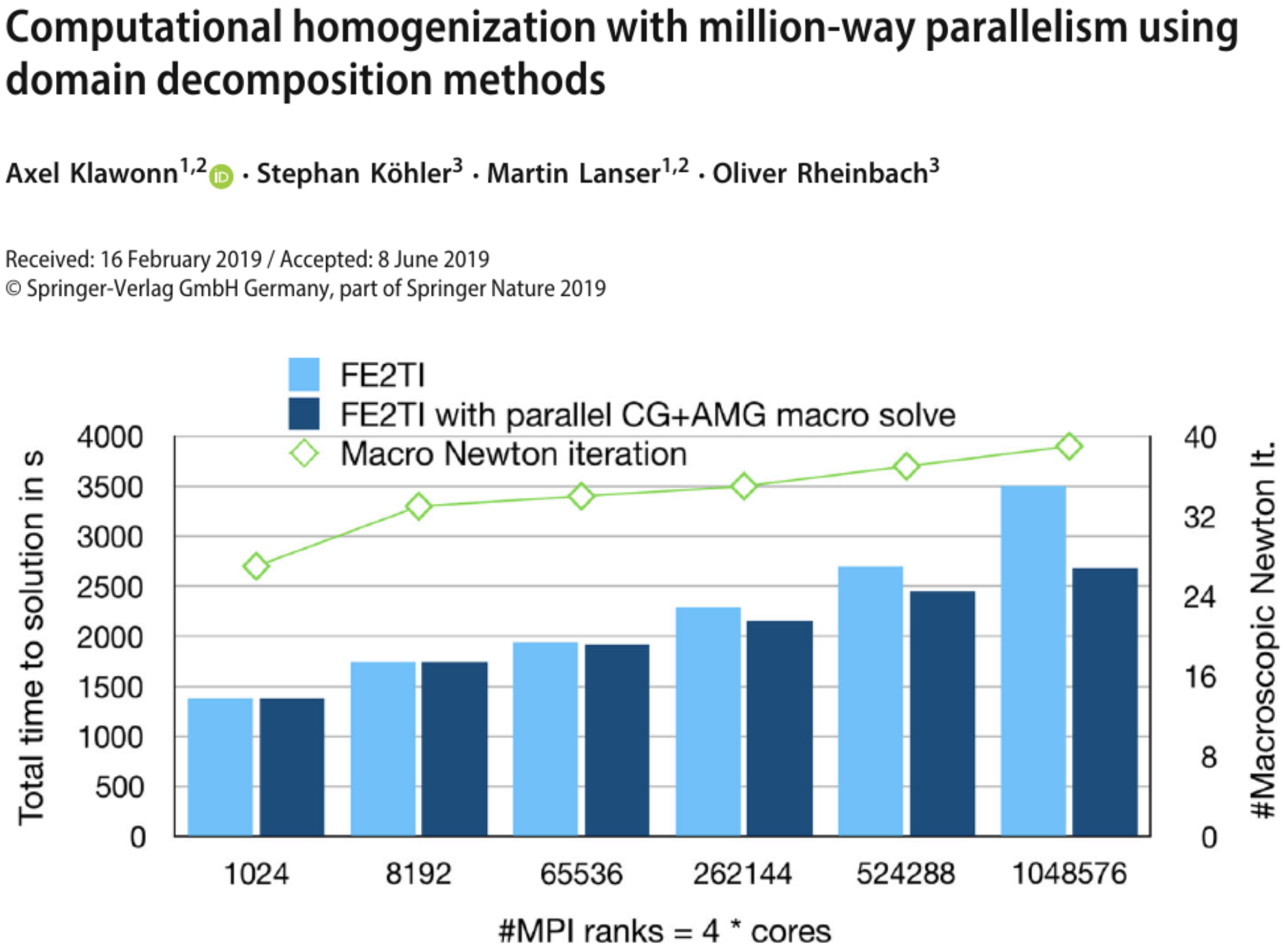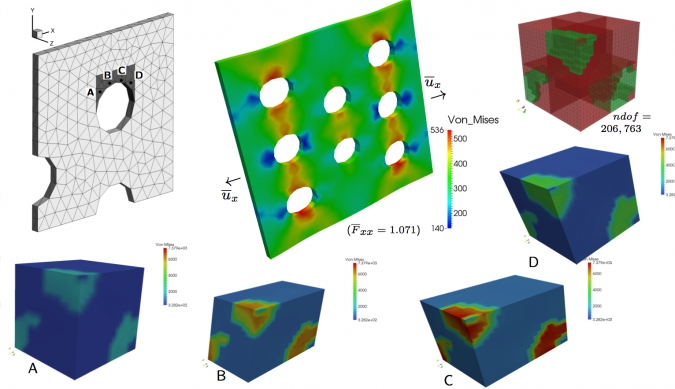EXASTEEL - Bridging Scales for Multiphase Steels
| Universität zu Köln | TU Bergakademie Freiberg | Universität Erlangen | Universität Duisburg-Essen | Ruhr-Universität Bochum | Università della Svizzera italiana |
|---|---|---|---|---|---|
| Prof. Dr. Axel Klawonn (Coordinator) | Prof. Dr. | Prof. Dr. Gerhard Wellein | Prof. Dr.-Ing. | Prof. Dr.-Ing. Daniel Balzani | Prof. Dr. |
| Dr. Martin Lanser | Dipl.-Math. | Markus Wittmann, | Dr. Lisa Scheunemann | Ashutosh Gandhi, M. Sc. | Radim Janalik |
| Matthias Uran, M. Sc. |
High-Q Club Member 2015
Publications and Talks from EXASTEEL
Workshop "New Algorithms for Exascale Computing" (December 2013)
The computational simulation of advanced high strength steels, incorporating phase transformation phenomena at the microscale, on the future supercomputers developed for exascale computing is considered in this project. To accomplish this goal, new ultra-scalable, robust algorithms and solvers have to be developed and incorporated into a new application software for the simulation of this three dimensional multiscale material science problem. Such algorithms must specifically be designed to allow the efficient use of the hardware. Here, a direct multiscale approach (FE2) will be combined with new, highly efficient, parallel solver algorithms. For the latter algorithms, a hybrid algorithmic approach will be taken, combining nonoverlapping parallel domain decomposition (FETI) methods with efficient, parallel multigrid preconditioners. Engineers, mathematicians and computer scientist work closely together in this project. We refer to our approach, combining FE2 with FETI-DP as FE2TI-approach.The envisioned scale-bridging will still require a computational power which will only be obtainable when exascale computing becomes available.




